Žagarė
Žagarė (![]()
Žagarė | |
|---|---|
City | |
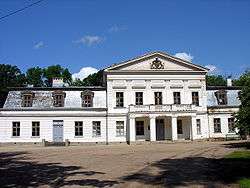 | |
 Flag 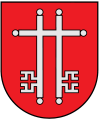 Coat of arms | |
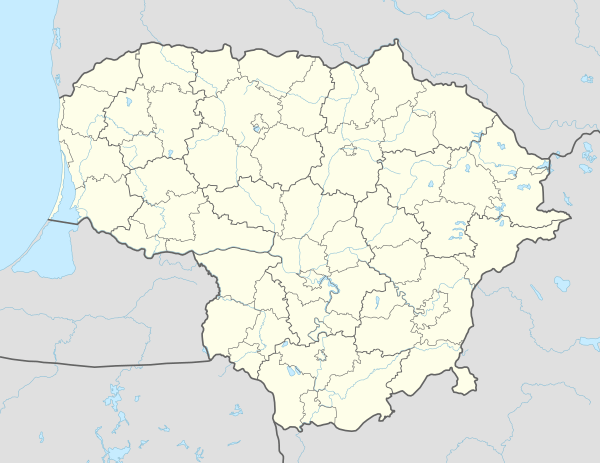 Žagarė Location of Žagarė | |
| Coordinates: 56°22′0″N 23°15′0″E | |
| Country | |
| Ethnographic region | Samogitia |
| County | Šiauliai County |
| Municipality | Joniškis district municipality |
| Eldership | Žagarė eldership |
| Capital of | Žagarė eldership |
| First mentioned | 1633 |
| Granted city rights | 1924 |
| Population (2005) | |
| • Total | 2,028 |
| Time zone | UTC+2 (EET) |
| • Summer (DST) | UTC+3 (EEST) |
Etymology
Žagarė's name is probably derived from the Lithuanian word žagaras, meaning "twig". Other renderings of the name include: Latvian: Žagare, Polish: Żagory, Yiddish: זאַגער, romanized: Zager.
History
The foundation of Žagarė dates back to the 12th century. A settlement of the Baltic tribe Semigallians Sagera was mentioned for the first time in March 1254 in the documents of the partitioning of the Semigallia. In 13th century it was a Semigalian fortress Raktuvė (or Raktė, first mentioned in 1272-1289 documents). It was an important centre of Semigallian warriors, who fought against the Livonian Brothers of the Sword and the Livonian Order. The cult of Barbora Žagarietė, servant of God, originated in the town in mid-1600s.
It long had a Jewish population that contributed to its culture. Yisroel Salanter (1810–1883), the father of the 19th-century Mussar movement in Orthodox Judaism, was born there. Isaak Kikoin (1908–1984), a renowned Soviet physicist, was also born there.
On 22 August 1941 on the orders of the Šiauliai Gebietskommissar Hans Gewecke, all half-Jews and Jews in the district were to be moved to Žagarė ghetto, the Jews were allowed only to take clothing and at most 200 Reichsmark. Many Jews were shot on the spot instead of being sent to the ghetto.[1] In a massacre committed by Einsatzgruppe A on 2 October 1941, the date of Yom Kippur that year, all Jews were cruelly killed at the marketplace and buried in Naryshkin Park.
Today Žagarė is the administrative centre of the Žagarė Regional Park, known for its valuable urban and natural heritage.
Notable residents
- Juozas Žlabys-Žengė, Lithuanian poet
- Vaclovas Daunoras, prominent Lithuanian opera soloist.
- Louis Bookman
- Sidney Hillman
- Isaak Kikoin
- Phoebus Levene
- Paul Mandelstamm
- Yisroel Salanter
- Kalonimus Wolf Wissotzky. Founder of Wissotzky Tea
- Barbora Žagarietė
Twin towns – sister cities
Žagarė is a member of the Charter of European Rural Communities, a town twinning association across the European Union, alongside with:[2]

.svg.png)















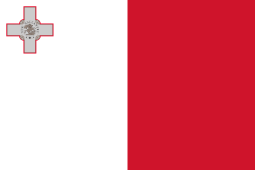








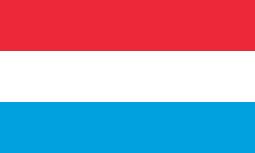
References
- Shafir, Michael. "Ideology, memory and religion in post-communist East Central Europe: a comparative study focused on post-Holocaust." Journal for the Study of Religions and Ideologies 15.44 (2016): 52-110
- "Charter members". europeancharter.eu. Charter of European Rural Communities. Retrieved 5 September 2019.
Further reading
- Rose Zwi: "Last Walk in Naryshkin Park" 1997 ISBN 978-1875559725 A Familie chronicle of her two families of origin Yoffe and Reisen. This account tells the story of Lithuanian Jews caught in the sweeping history of the first half of the century in Europe.
External links
| Wikimedia Commons has media related to Žagarė. |
